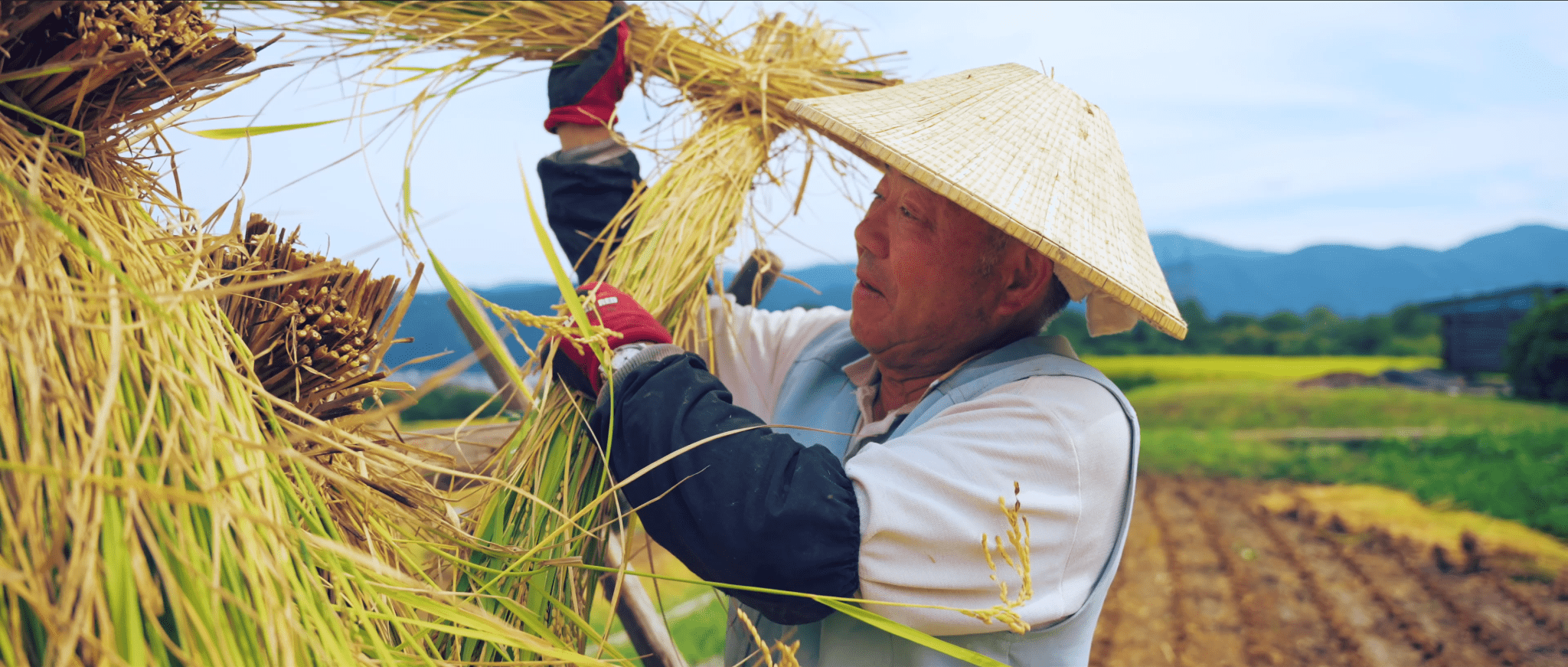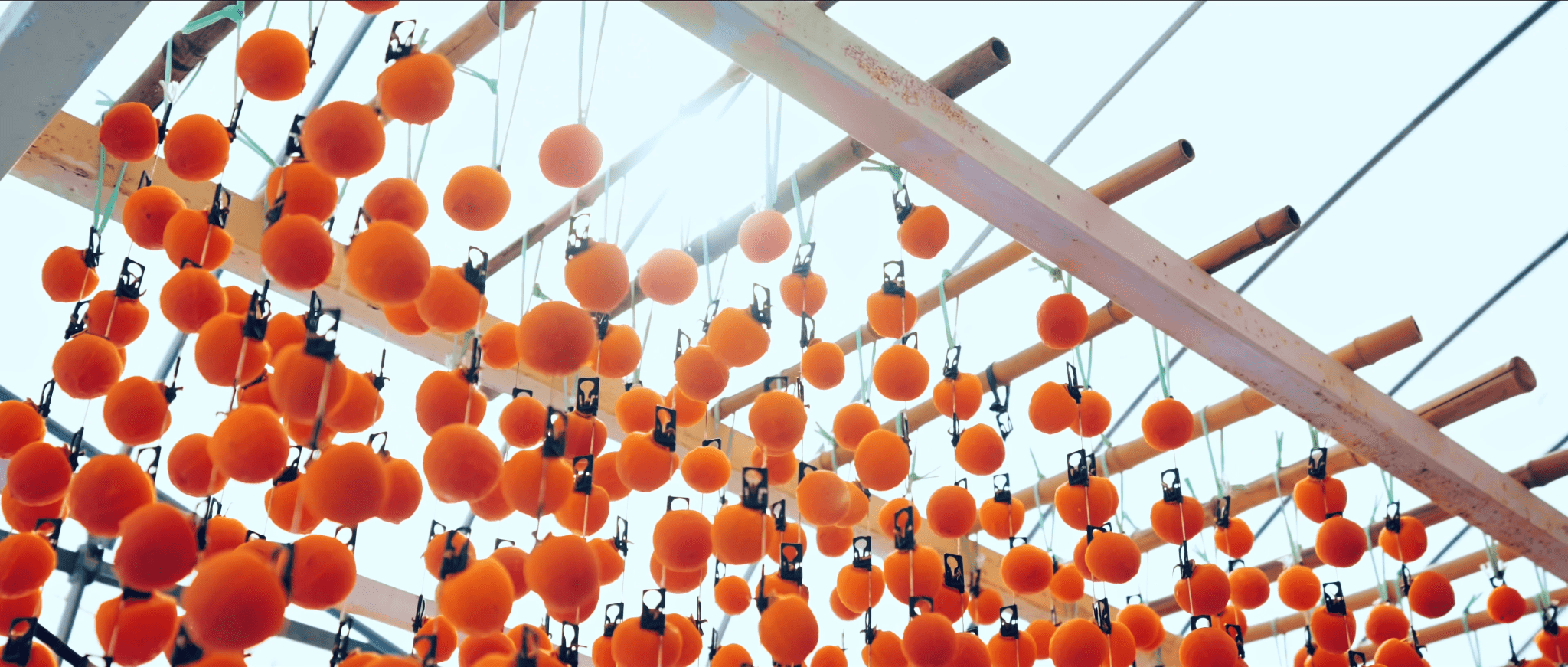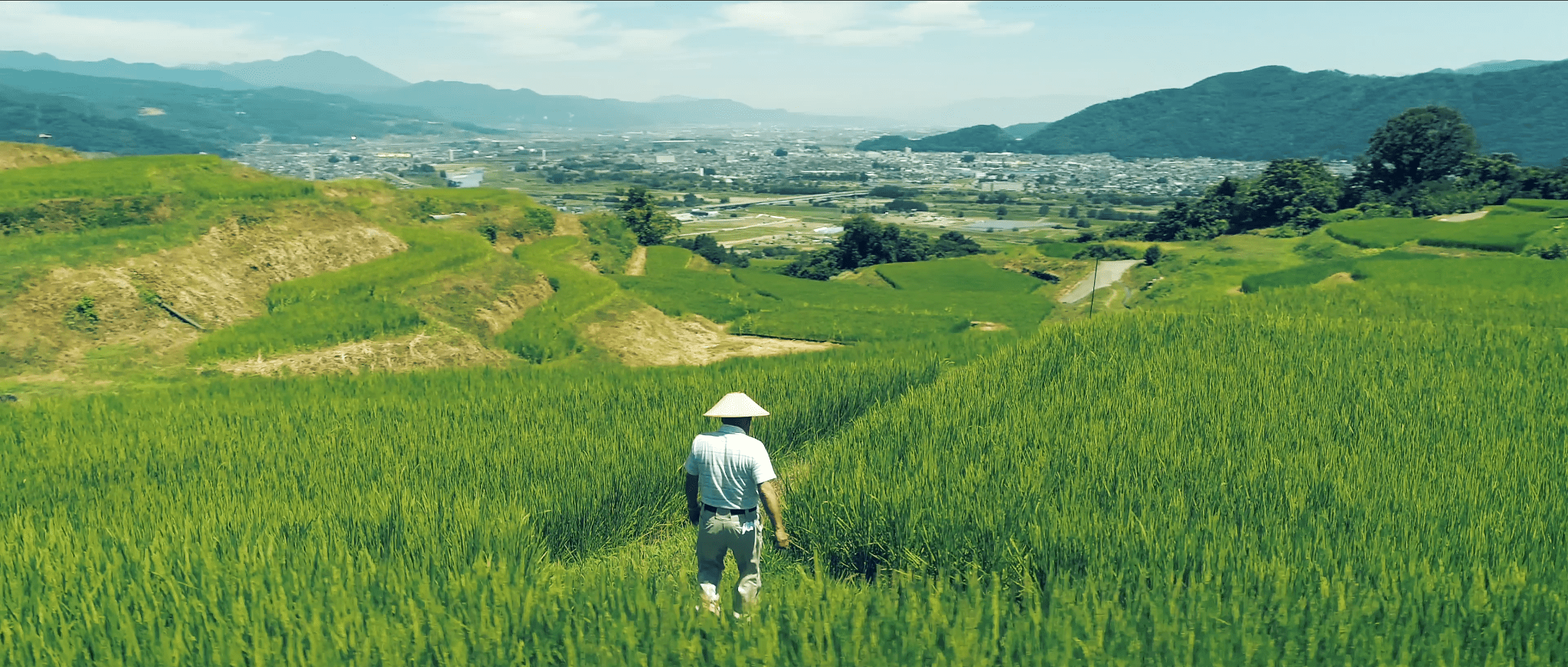
The primary staple food – Nagano’s RICE
ふっくら、もっちり、旨みあふれる日本のお米
Glossy onigiri rice balls and a bowl of the perfect fluffy white rice. The combination of rice with other dishes and ingredients is an indispensable part of Japanese culture; there is a saying in Japan, “Hakumai ga susumu,” which means “Goes well with white rice”. People can enjoy rice with different toppings in the form of an onigiri, or enjoy the taste of rice along with meat or fish dishes. Rice, which has graced the tables of Japan for centuries, has been an essential part of Japanese history and culture, serving as the political and economic foundation of the country as well as serving as the origin of various rituals, including festivals to pray for a good harvest.
The foundation behind rice cultivation in Nagano
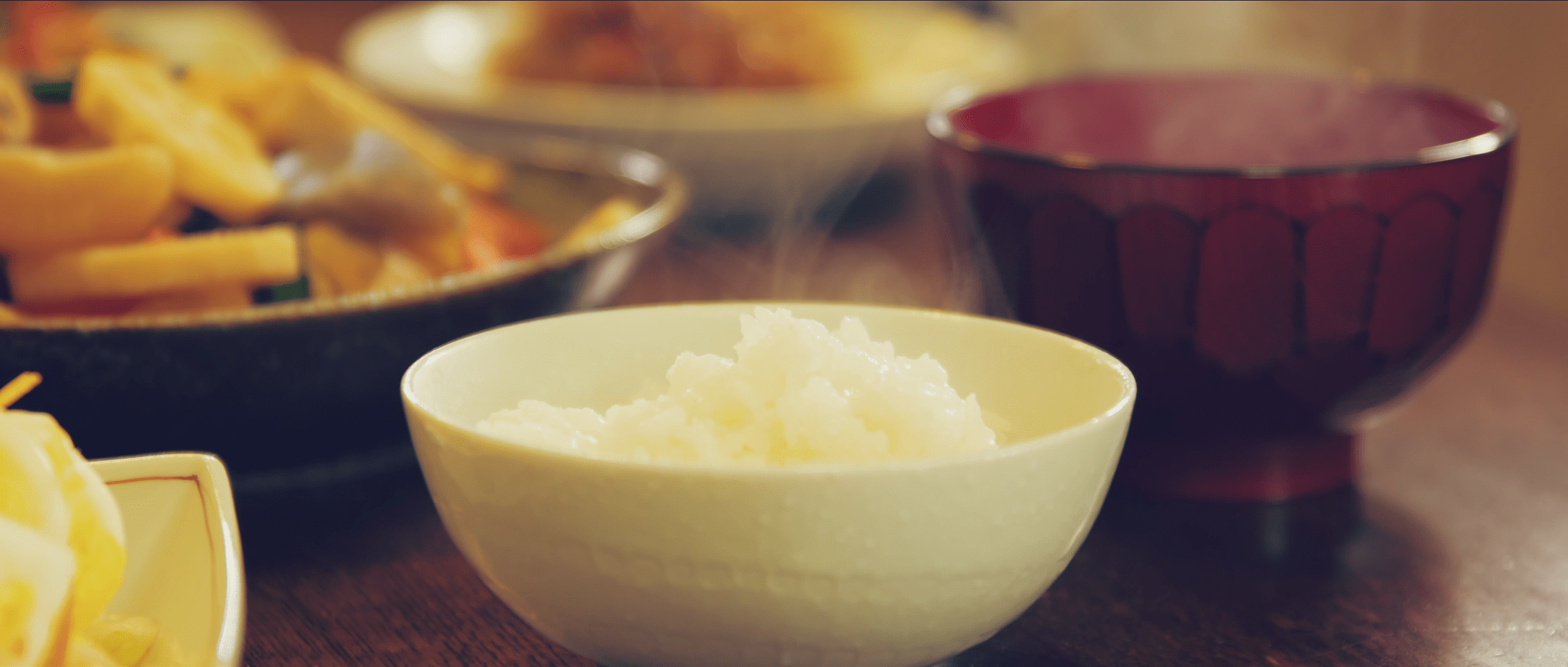
Niigata, Akita, and Hokkaido are famous for rice production in Japan, but Nagano has one of the highest ratios of first-class rice(70% or above of the rice grains in a sample have no defects in shape) in the country, although the cultivated area is not as large as those of other prefectures. In addition to low incidence of pests and diseases, the long hours of sunlight and the difference in temperature between day and night allow nutrients to accumulate, resulting in delicious rice.
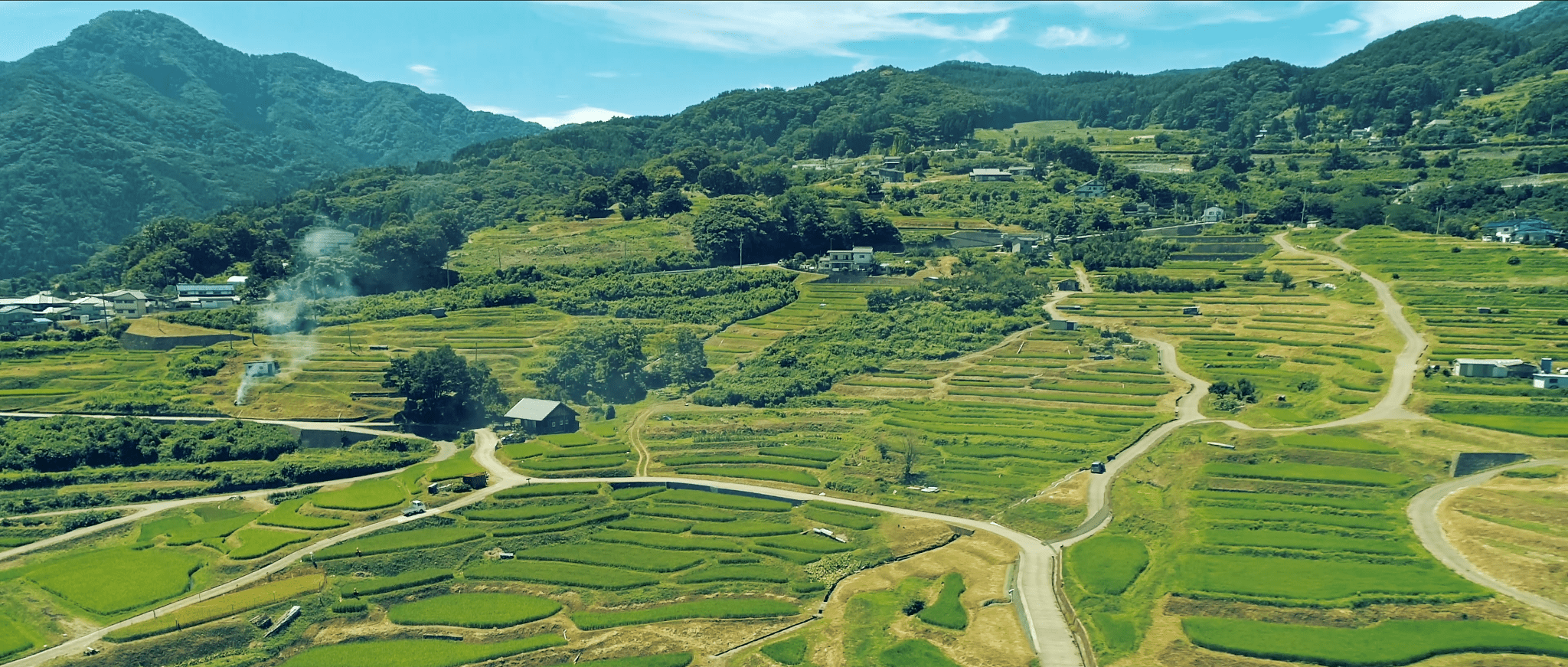
On the other hand, Nagano is not an ideal place for rice cultivation due to its cool climate and scarce rainfall, and its sloping terrain surrounded by mountains. The efforts of people to overcome various constraints, such as the ingenious use of rice paddies and irrigation channels, and the improvement of rice varieties suited to the environment, have supported rice cultivation in Nagano. For example, in mountainous areas, rice is grown in “terraced rice paddies,” which are paddies built in a stepped pattern on slopes between mountains and valleys, and many irrigation canals have been developed to draw water from deep in the mountains. In regions with deep snow and high elevations, water from melting snow or cold rivers is collected in reservoirs and heated by the sun before being drawn into the rice paddies. In this way, Nagano Prefecture has been developing rice cultivation techniques and rice varieties adapting to the different circumstances in the region.
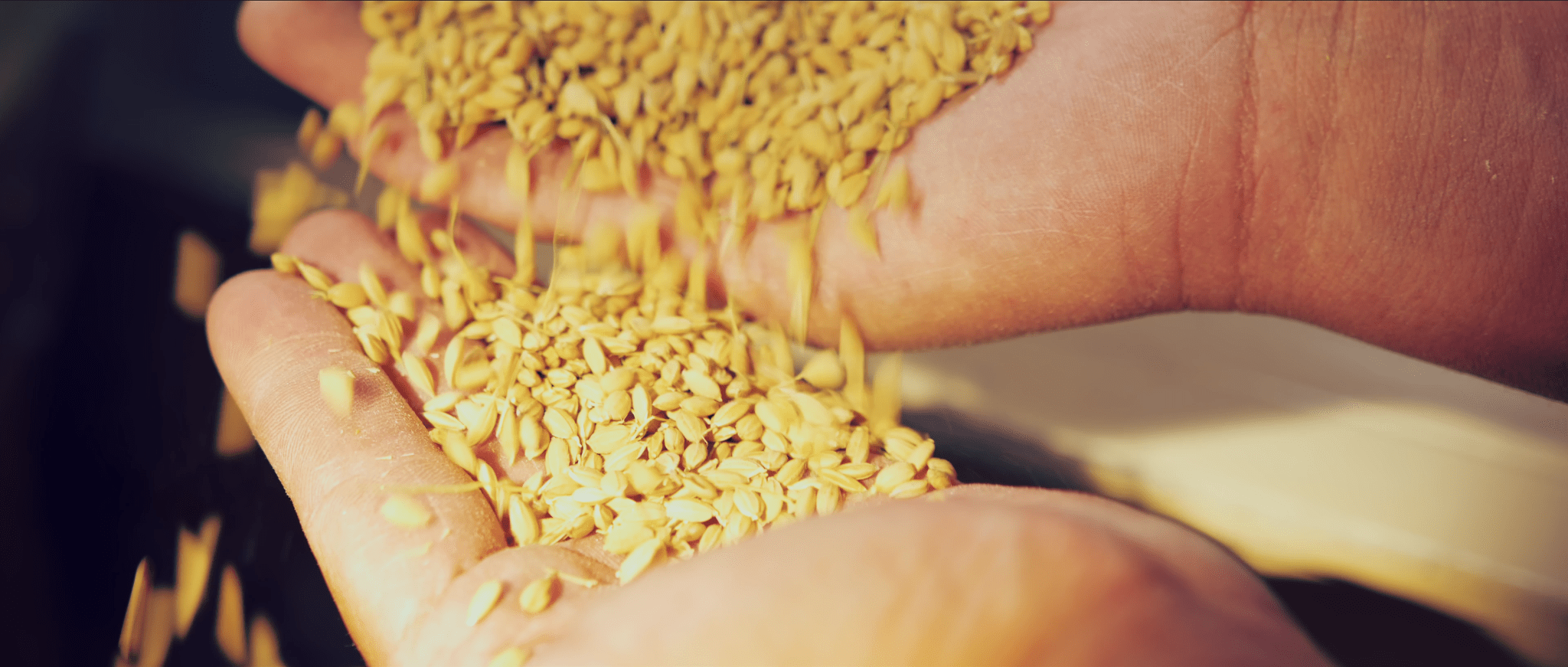
In 2013, Nagano’s original rice variety “Kazesayaka”, was registered as a new variety. This new variety is said to be well suited to efficient farming and also environmental changes such as global warming. It is named “Kazesayaka” because it is grown in fresh air, at an altitude of 600 to 700 meters above sea level, with temperatures below 28 degrees Celsius, in a well-ventilated terrain. The efforts and ingenuity of our ancestors to make the most of Nagano’s climate are continuing unabated. “Kazesayaka” has a light texture, but remains firm and chewy even after cooling. “Kazesayaka” is a rice variety unique to Nagano, with a firm sweetness and flavor that enhances and brings out the best flavors of other dishes.
Symbiosis with Nature and People’s Ingenuity
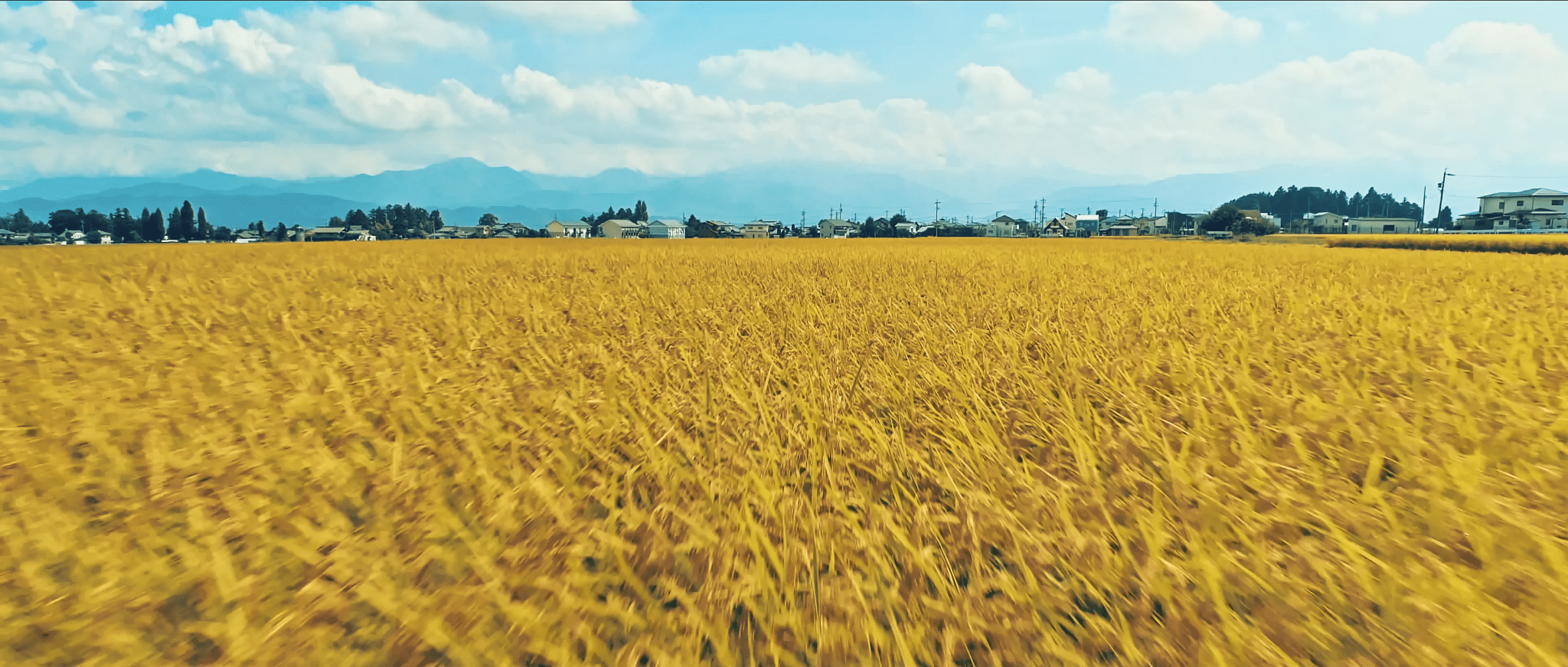
As interest in and popularity of Japanese food grows around the world, Japanese rice has become an important part of the Japanese diet itself. The common thread that runs through Nagano’s rice cultivation is the tireless efforts and ingenuity that have been made to overcome unfavorable conditions. It is a symbol of the people of Nagano who have lived in harmony with nature.
